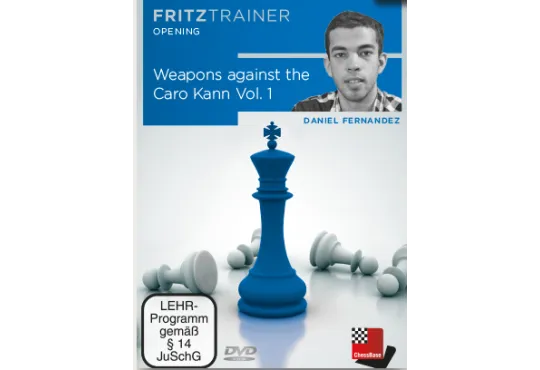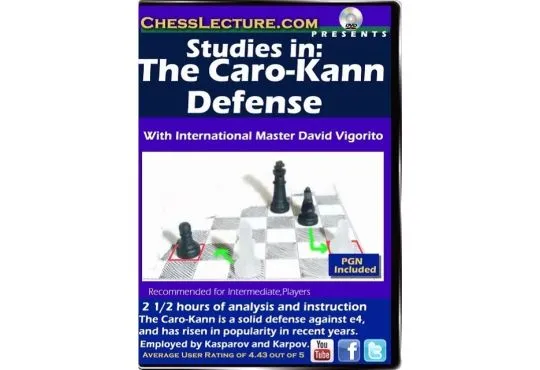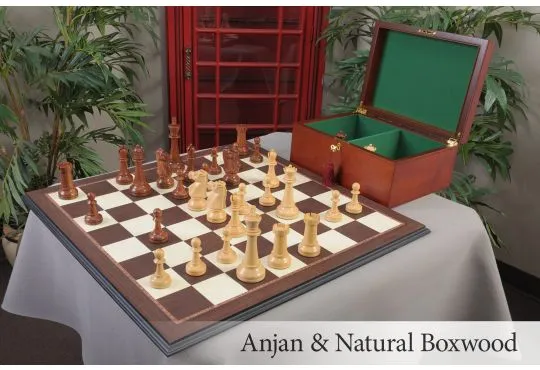7 Famous Chess Games You Should Commit To Memory
Chess, a game rich in history and intellectual challenge, has seen some of the most extraordinary battles of wits and strategies unfold on its sixty-four squares. For those looking to deepen their understanding and skill, studying the most famous chess games can be both inspiring and educational.
These seven famous chess games showcase the brilliance and creativity of the greatest chess minds, offering timeless lessons that every enthusiast should appreciate and learn from.

1. Kasparov vs. Karpov, 1985 (World Championship Match)
The 1985 World Chess Championship was a momentous event held in Moscow, from September 3 to November 9, between Anatoly Karpov and Garry Kasparov. This match, following the contentious 1984 championship, saw Kasparov emerge as the youngest World Champion at age 22, making it one of the most famous chess games in history. The 1984 match had been halted after 48 games and 5 months, marking the first time a world championship ended without a result. The political backdrop, with Kasparov seen as representing the "new Russia" and Karpov as the "old guard," added layers of intrigue to their encounters.
Karpov entered the 1985 match with a FIDE rating of 2720, slightly higher than Kasparov's 2700. Despite their age difference – Karpov being 34 and Kasparov 22 – both were in top form. Karpov had just won the OHRA tournament in Amsterdam, while Kasparov had triumphed in matches against Robert Hübner and Ulf Andersson.

The match rules, modified due to the previous year's protracted contest, stipulated a 24-game limit, with Karpov retaining the title in the event of a 12-12 draw. Kasparov's aggressive play style was evident from the first game, where his novel opening choices left Karpov off-balance. The venue, Moscow's Tchaikovsky Concert Hall, provided a fitting stage for this historic clash.
Kasparov's strategies in games 1 and 16 were particularly noteworthy, demonstrating his deep preparation and bold tactics. His victory in the final game, after a series of errors by Karpov, sealed his place in history as the new World Champion.
2, Fischer vs. Spassky, 1972 (Game 6)
The 1972 World Chess Championship, dubbed the "Match of the Century," featured American challenger Bobby Fischer and Soviet champion Boris Spassky. Known as one of the famous chess matches held in Reykjavík, Iceland, the match symbolized Cold War tensions between the US and the Soviet Union. Fischer, known for his eccentric behavior and exceptional talent, became the first American-born player to win the world title, ending 24 years of Soviet dominance.
Fischer's path to the championship was marked by dominant performances in the Candidates matches, where he defeated top grandmasters with perfect scores. Despite never having beaten Spassky before, Fischer's superior Elo rating of 2785 made him the pre-match favorite. The match began on July 11, 1972, with Fischer's unpredictable demands and delayed arrival. Intervention by British banker Jim Slater and a persuasive call from Henry Kissinger secured Fischer's participation.
Throughout the match, Fischer surprised Spassky with varied opening strategies, deviating from his usual repertoire. This strategy, combined with his deep preparation, allowed Fischer to gain an early lead. The match concluded with Fischer winning 12½–8½ after Spassky resigned in the final game. The championship was widely broadcast, skyrocketing chess's global profile and marking a significant moment in Cold War cultural history.
3. The Immortal Game (Anderssen vs. Kieseritzky, 1851)

The Immortal Game, played in 1851 between Adolf Anderssen and Lionel Kieseritzky, is one of the most famous chess games ever. It took place during a break in the London 1851 chess tournament, though it was a casual game, not part of the competition. Anderssen's victory involved a spectacular double rook sacrifice and a mating attack with his minor pieces, impressing Kieseritzky, who later published the game in the French chess journal, La Régence. In 1855, Ernst Falkbeer dubbed it "The Immortal Game."
The game is celebrated for its bold sacrifices and tactical brilliance, hallmarks of the romantic era of chess. Despite modern critiques of some moves as unsound, the game is a favorite in chess literature for illustrating aggressive play and creative tactics. Anderssen's sacrifices included a bishop on move 11, both rooks starting on move 18, and the queen on move 22, culminating in a checkmate with his remaining minor pieces. This style, emphasizing rapid development and daring attacks, exemplifies the 19th-century romantic school of chess, making the game a timeless example of chess aesthetics and strategy.
4. The Opera Game (Morphy vs. Duke of Brunswick and Count Isouard, 1858)
Sitting amongst the famous games of chess, The Opera Game was an 1858 chess match played in a Paris opera house. American chess master Paul Morphy faced two strong amateurs: German noble Karl II, Duke of Brunswick, and French aristocrat Comte Isouard de Vauvenargues. It was a consultation game, with Duke Karl and Count Isouard jointly deciding each move for the black pieces, while Morphy controlled the white pieces alone. The game, played during a performance, saw Morphy quickly checkmate his opponents following a queen sacrifice.
This game is renowned for teaching key chess principles such as piece development and the value of sacrifices in mating combinations. Morphy's rapid development and aggressive tactics, including a spectacular queen sacrifice, led to a swift victory. The game is often used in chess literature to illustrate these themes.
Morphy’s opponents chose the Philidor Defense, but their 3...Bg4 move was inferior, allowing Morphy to take control. After 7. Qb3, Morphy's relentless attacks forced black into a defensive position. The critical moment came with 10. Nxb5!, a knight sacrifice that opened up the board and led to a decisive advantage for Morphy. The game concluded with Morphy’s famous queen sacrifice 16. Qb8+!, followed by checkmate on the next move. This match, known for its dramatic and instructive play, remains a classic example of 19th-century romantic chess.
5. Deep Blue vs. Garry Kasparov, 1997 (Game 6)
Game 6 of the 1997 Deep Blue vs. Garry Kasparov rematch, played on May 11 in New York City, marked a historic moment in chess history. This game concluded the series with Deep Blue's victory, making it the first time a computer defeated a reigning World Champion in a multi-game match. Before this game, the score was tied at 2½–2½, with Kasparov winning the first game, losing the second, and drawing the next three.
 CLEARANCE - Caro Kann - Secrets Revealed Part 1 & 2 - IM Alex Ostrovskiy
CLEARANCE - Caro Kann - Secrets Revealed Part 1 & 2 - IM Alex Ostrovskiy CLEARANCE - FRITZ TRAINER - Weapons against the Caro Kann Vol. 1 Vol. 1: Panov and Two Knights
CLEARANCE - FRITZ TRAINER - Weapons against the Caro Kann Vol. 1 Vol. 1: Panov and Two Knights E-DVD Studies in the Caro Kann Defense - Chess Lecture - Volume 101 Hosted by IM David Vigorito
E-DVD Studies in the Caro Kann Defense - Chess Lecture - Volume 101 Hosted by IM David Vigorito
In this decisive game, Kasparov chose the Caro-Kann Defense, a solid but somewhat passive opening. Deep Blue, however, executed a well-prepared strategy, breaking traditional opening principles but putting immediate pressure on Kasparov. The key move, 5. Ng5, aimed at exploiting the weak f7 square. Kasparov’s response, 7. ...h6, was a blunder, leading to a powerful knight sacrifice by Deep Blue with 8. Nxe6.

Kasparov's position quickly deteriorated, and he resigned after just 19 moves, a game lasting barely over an hour. This defeat drew significant media attention and marked a turning point in the relationship between human and computer capabilities in chess. Despite Kasparov's claims of unfair assistance, IBM – the company behind Deep Blue - ended the Deep Blue project, leaving this match as a landmark in chess history.
6. Botvinnik vs. Capablanca, 1938 (AVRO Tournament)
On November 22, 1938, Mikhail Botvinnik, playing white, defeated José Raúl Capablanca in one of the most famous games in chess history. The game took place during round 11 of the AVRO tournament in Rotterdam. Capablanca, a former World Champion from 1921 to 1927, faced Botvinnik, who would later become World Champion from 1948 to 1957.
Garry Kasparov praised the game, calling it Botvinnik's "game of his life." He suggested it should be named "peerless" or "classical" due to its brilliance. This was the last encounter between the two before Capablanca's death in 1942. They had played seven competitive games before, including a drawn game with opposite colors in the same tournament.
 The 6" Fischer-Spassky Series Chess Set, Box, & Board Combination Enjoy Savings of 29% Off MSRP When Purchased as a Combination
The 6" Fischer-Spassky Series Chess Set, Box, & Board Combination Enjoy Savings of 29% Off MSRP When Purchased as a Combination$847.95
Starting at $599.00
To $698.95
Free Worldwide Shipping
The 1962 Varna Olympiad Commemorative Chess Set, Box & Board Combination Enjoy Savings of 33% Off MSRP When Purchased as a Combination$447.00
Starting at $319.00
To $388.95
The game featured the Nimzo-Indian Defense: Normal Line. Botvinnik's strategic play involved sacrifices and tactical combinations. The critical moment came with 29...Qe7, leading to Botvinnik's famous 30.Ba3!, drawing the black queen away and paving the way for victory. Botvinnik's 31.Nh5+ was a decisive sacrifice, leading to a series of forced moves resulting in a winning position. Capablanca resigned, unable to stop the advancing pawn and impending checkmate.
This game is celebrated for its strategic depth and is often studied for its exemplary tactics and endgame play.
7. Tal vs. Botvinnik, 1960 (World Championship Match)
The World Chess Championship between former champion Mikhail Botvinnik and champion Mikhail Tal took place in Moscow from March 15 to May 13, 1961. Tal had previously defeated Botvinnik in 1960, making Botvinnik entitled to a rematch the following year. Botvinnik won the world title decisively with a score of 13–8, despite Tal being favored due to his previous victory and being 25 years younger.
Botvinnik's victory came from his superior strategy and ability to counter Tal's aggressive playing style. It was not known at the time, but Tal suffered from kidney illness in 1962. IIn 2002, Yuri Averbakh revealed that Tal had health issues during the match and that doctors in Riga had advised him to postpone. Botvinnik agreed to a postponement only if certified by Moscow doctors, so Tal decided to play despite his condition.

This win made Botvinnik the first and only person to have three separate reigns as World Champion. At 49 years old, he also became the oldest player to win a World Championship match since 1892. When 55-year-old Wilhelm Steinitz defeated Mikhail Chigorin. Tal played the match over 24 games and retained the championship if it ended in a 12–12 tie.
Why Memorize These Games?
Memorizing these famous chess games can provide several benefits:
- Strategic Insights
Understanding the strategic plans and tactical themes employed by great players can deepen your own strategic understanding. These games illustrate various strategic concepts such as control of the center, king safety, and the importance of development.
- Tactical Skills
Analyzing complex combinations and sacrifices improves your tactical vision. Games like "The Immortal Game" and Tal's victories sharpen your ability to spot and execute combinations.
- Historical Context
Appreciating the historical significance of these games connects you to the rich heritage of chess. Each game reflects the styles and ideas of its time, offering a window into the evolution of chess thinking.

How to Memorize these Games
- Break Down the Game: Segment into openings, middlegames, and endgames. Understand the principles and tactics behind each phase.
- Use Chess Notation: Learn algebraic notation to follow and record moves, aiding in replaying games on physical or virtual boards.
- Replay Regularly: Set up a board and replay moves repeatedly to reinforce memory.
- Understand the Ideas: Comprehend the strategies behind moves for better retention.
- Visualize: Practice visualizing the board and pieces mentally.
- Use Software and Apps: Tools like ChessBase offer annotated game replays.
- Study Annotations: Read grandmaster analyses for deeper insights.
- Practice with Puzzles: Use puzzles based on famous positions to recognize patterns.
- Mnemonics: Use memory techniques like the Dominic or Major System.

Takeaway
By studying and committing these seven famous chess games to memory. You will not only help your appreciation for the game's history but also improve your own playing skills. Each game provides unique lessons in strategy, tactics, and creativity, making them invaluable resources for any serious chess player.
These games are not just about moves and strategies. They tell stories of human ingenuity, rivalry, and the relentless pursuit of excellence. Whether you're a novice or an experienced player seeking inspiration, these games offer timeless lessons that will enrich your game. Pair that with a unique chess set from House of Staunton and you are well on your way to becoming a chess master.

